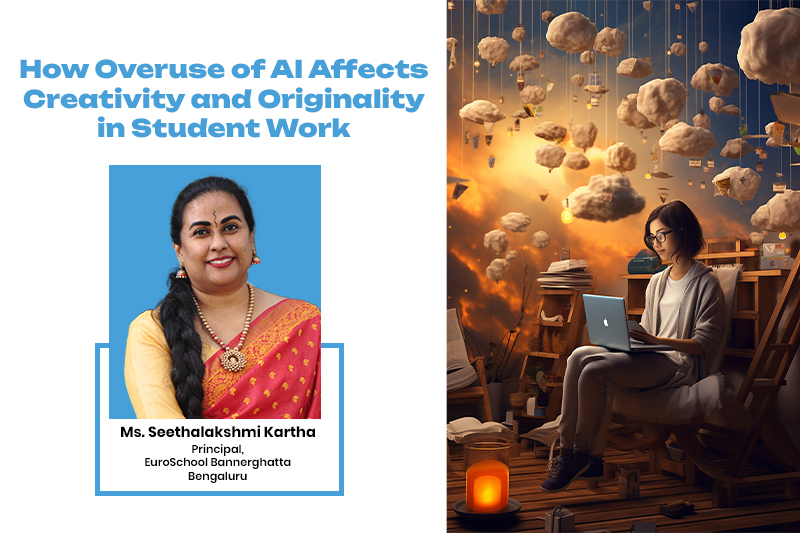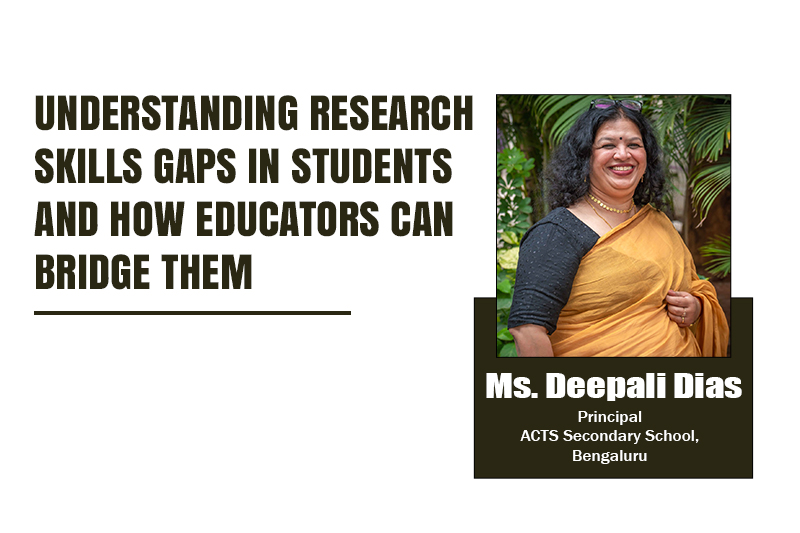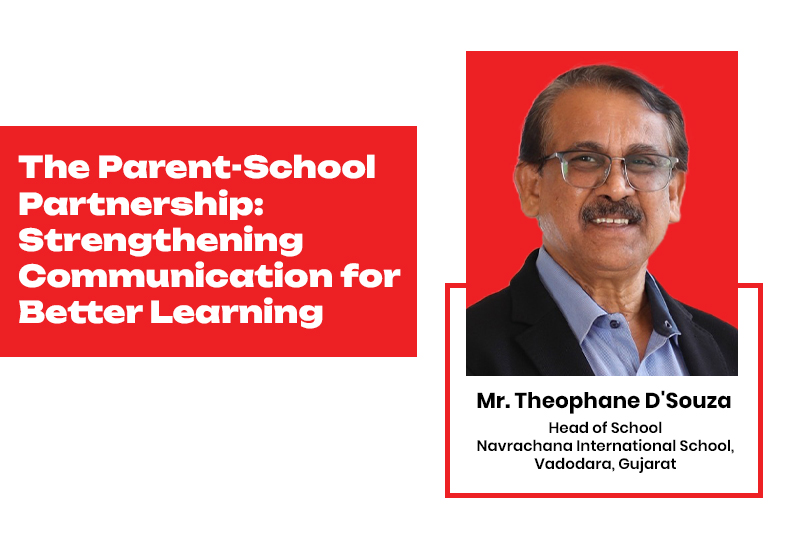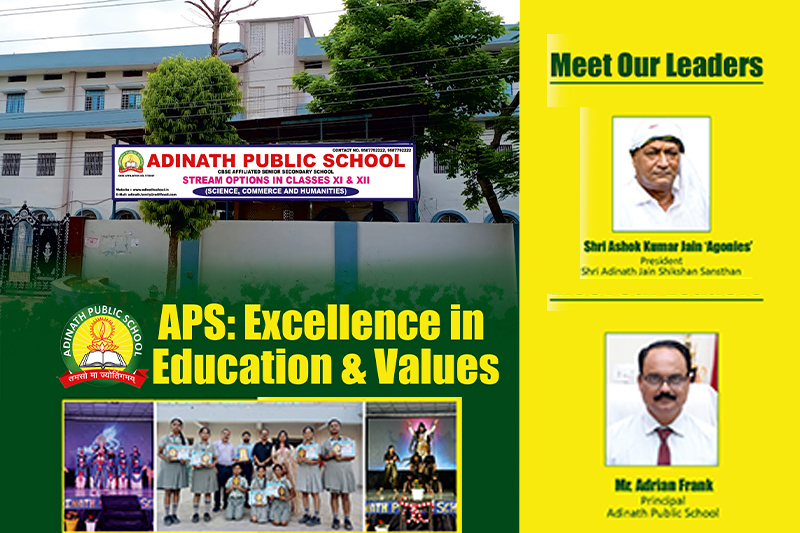EuroSchool Bannerghatta | Seethalakshmi Kartha on AI’s Impact on Student Creativity
“The danger is not that machines will begin to think like humans, but that humans will begin to think like machines.”
— Sydney J. Harris
How Overuse of AI Affects Creativity and Originality in Student Work
These words rang especially true for Seethalakshmi Kartha, Principal of EuroSchool Bannerghatta, as she sat in a school auditorium filled with bright, young students ready to present their visions of the future. The elocution theme was thrilling—“The World of Tomorrow: Imagined by Us.” But what followed surprised her.
One by one, students delivered speeches that were articulate, grammatically flawless, and technically impressive. Yet, something essential was absent. Their delivery, while polished, lacked uniqueness. The rhythm, metaphors, and structure felt oddly repetitive—too perfect, too aligned. And then it clicked. These weren’t original expressions of thought. Many were crafted—or heavily shaped—by AI writing tools.
What should have been a celebration of student imagination instead revealed a quiet dependency forming beneath the surface.
The Silent Shift: From Imagination to Imitation
As an educator with over three decades of experience, Seethalakshmi Kartha has seen countless trends in pedagogy. But few concern her as much as the overuse of AI in education, particularly when it begins to replace independent thinking with automated templates.
While AI tools can offer guidance, streamline writing, or help structure ideas, a growing number of students now rely on these platforms not for support—but for substitution.
According to a 2024 study published in Discover Artificial Intelligence, students who frequently used AI to complete assignments demonstrated a significant decline in divergent thinking—a key driver of problem-solving and innovation (Zhai, 2024). Rather than exercising their minds, students were outsourcing their thoughts. What appeared to be linguistic fluency was, in reality, an erosion of creative muscle.
The Brain on Autopilot: Neurological Warnings
Recent research from MIT has added a scientific lens to this conversation. Brain scans of students working with AI-assisted writing tools revealed reduced activity in regions associated with memory, creativity, and critical reasoning (MIT, 2024). In simple terms, when the machine takes over, the brain takes a back seat.
For students, this means less mental engagement. For educators, it signals a growing challenge: how to maintain intellectual rigor in classrooms where answers are just a prompt away.
Emotional Flattening and the Loss of Voice
But beyond the statistics and studies lies a subtler, more worrying transformation: the emotional flattening of student expression.
Where once student essays brimmed with quirky metaphors, surprising analogies, and raw vulnerability, today's AI-assisted writing often feels sanitized. As Seethalakshmi Kartha observed, student work now resembles well-edited brochures—impeccable in grammar, yet stripped of soul. The originality in student work is fading into uniformity.
A joint study by Cornell and Santa Clara University, cited in The New Yorker (2024), found that AI-generated content tends to homogenize expression. The individuality of student voices is smoothed over in favor of efficiency and predictability.
When students begin to believe that “perfect” writing must follow algorithmic patterns, they lose touch with the beautiful imperfections that make their thoughts unique. This is not just a stylistic shift—it’s a philosophical one. It's the subtle replacement of human imagination with algorithmic logic.
Redefining the Role of AI in Schools
AI is not inherently the villain. When used appropriately, it can be a powerful tool—offering feedback, brainstorming support, or structure to help students organize their ideas. But the key lies in how and when it's used.
The role of education is not to churn out error-free content but to cultivate curious, courageous thinkers. As Kartha notes, “Classrooms must remain spaces of exploration, imperfection, and discovery—not standardization.”
Teachers, parents, and educational leaders must reclaim creativity as a core objective. That means encouraging students to take intellectual risks, make mistakes, and write from the heart, even if it’s messy. AI can be a co-pilot—but the child must remain the author.
Protecting the Child’s Voice in an Algorithmic Age
The rise of AI in schools presents a paradox. On one hand, it promises personalization and support. On the other, it tempts students to bypass the process of thinking, and that’s where the danger lies.
If children begin to equate writing with automation, we risk raising a generation that is reluctant to express itself, unsure of its own perspective, and uncomfortable with uncertainty. These aren’t just writing habits—they are habits of mind and identity.
Educators must create space for authentic expression: journals without prompts, open-ended assignments, and storytelling that values voice over polish. More than that, students need to be taught the value of their own ideas, not just the convenience of borrowed ones.
A Call to Action for Educators and Parents
Seethalakshmi Kartha’s message is not an alarmist cry against technology—but a timely reminder to balance it. AI should enhance creativity, not replace it.
Her call to action is clear:
- Let students write badly before they write well.
- Let them think slowly before they think clearly.
- Let them sound different before they sound polished.
These are not signs of weakness—they are signs of growth.
Conclusion: Imagination as the Compass of the Future
In the midst of an AI-powered age, our greatest responsibility is to protect what machines can’t replicate—imagination, originality, and voice.
Let AI remain a tool, not a crutch. Let students be dreamers, not data points. And let education continue to champion the wonderfully flawed, deeply human process of discovery.
As Seethalakshmi Kartha of EuroSchool Bannerghatta wisely concludes:
“Let AI be the assistant, the child the author, and imagination stay alive—not as a relic of the past but as the compass of the future.”






